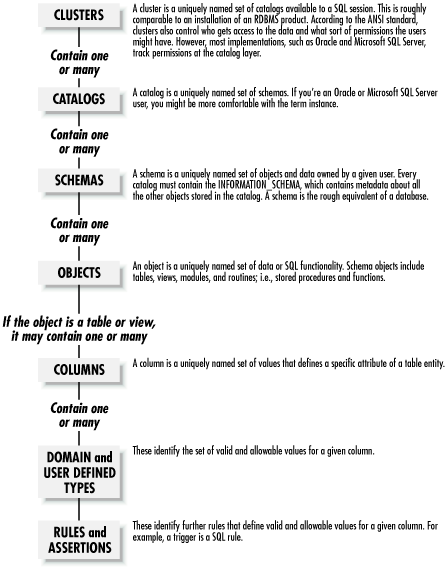The Relational Model
Effective SQL programming requires that the programmer think in terms of sets of data, rather than of individual rows. The RDBS model follows a linguistic protocol to define the hierarchy of data sets within the SQL99 standard.
Figure 2.1 is a description of the SQL99 terminology used to describe the hierarchical working sets used by a relational database—clusters contain sets of catalogs; catalogs contain sets of schemas; schemas contain sets of objects, such as tables and views; and tables and views are composed of sets of records.

Figure 2-1. SQL99 Dataset hierarchy
In the relational model, data is shown logically as a two-dimensional table that describes a single entity (for example, business expenses). Data in the table is displayed in columns and rows . Each column of the table describes a specific attribute of the entity. For example, in a Business_Expense table, a column called Expense_Date might show when the expense was incurred. Each record in the table describes a specific entity; in this case, everything that makes up a business expense (when it happened, how much it cost, who incurred the expense, what it was for, and so on). The specific values of each attribute are supposed to be atomic ; that is, they are supposed to contain one, and only one, value. If a table is constructed in which the intersection of a row and column can contain more than ...
Get SQL in a Nutshell now with the O’Reilly learning platform.
O’Reilly members experience books, live events, courses curated by job role, and more from O’Reilly and nearly 200 top publishers.

